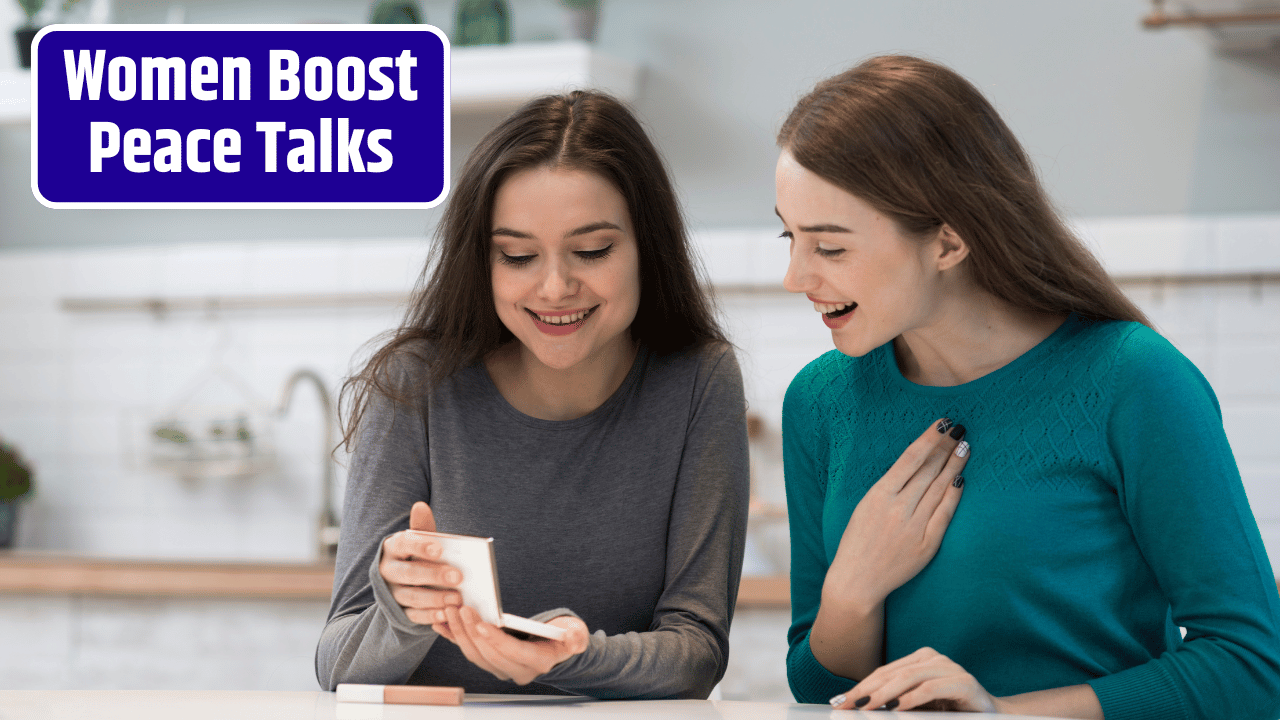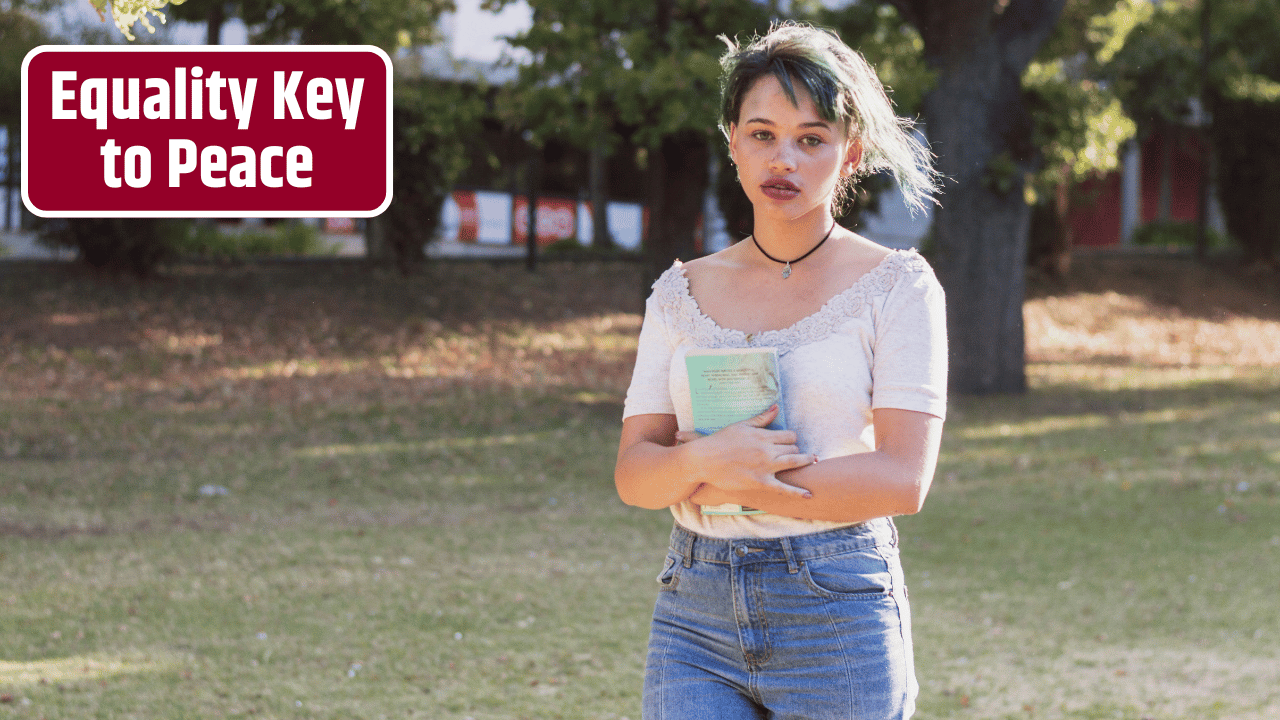In war, women are often the first to lose—and the last to be heard. Their bodies become battlegrounds. Their homes vanish. Their children are stolen by violence or starvation. And when the guns go quiet, peace talks begin… behind closed doors filled mostly with men.
But here’s the twist: when women are in the room, peace doesn’t just get signed—it sticks.
That’s not wishful thinking. That’s cold, global data. And it’s flipping one of the most outdated assumptions in diplomacy: that women belong on the sidelines. Turns out, they’re the ones keeping the damn thing from falling apart.
Table of Contents
The Numbers Don’t Lie (Even If the Politicians Do)
We’re talking decades of studies now—from the UN, the Council on Foreign Relations, Georgetown’s Institute for Women, Peace and Security. The verdict is remarkably consistent.
Let’s break it down:
| Metric | With Women in Negotiations |
|---|---|
| Peace deal durability (15+ years) | 35% more likely |
| Implementation of agreements | Significantly higher rates |
| Focus on social recovery (education, healthcare, justice) | Substantially increased |
| Civil society involvement | Up to 64% more inclusive processes |
| Probability of a peace deal being reached | 20% more likely when women’s groups involved |
(Source: UN Women, Peace and Security Report; CFR Women and Foreign Policy; Georgetown WPS Index)
So no, this isn’t a “diversity and inclusion” add-on. It’s a proven strategy for peace.
Real Stories Behind the Stats
Colombia’s Gender Chapter: From Advocacy to Action
During Colombia’s 2016 peace process with FARC rebels, women’s groups didn’t just sit in—they reshaped the deal. They pushed for land restitution, gender-based violence protections, and economic reintegration for female ex-combatants. The result? The final agreement included over 100 gender-related provisions—an unprecedented move in global peace accords.
Sierra Leone’s Quiet Power
After the civil war, women’s networks like MARWOPNET (Mano River Women’s Peace Network) worked tirelessly on community reintegration, truth-telling, and trauma healing. They weren’t formally invited to negotiations—but their local credibility and organizational muscle kept fragile peace from unraveling.
Philippines’ Inclusive Framework
In Mindanao, women helped mediate between the government and Moro Islamic Liberation Front—not just through diplomacy, but by leading interfaith, intercultural dialogues across deeply divided communities. They made peace human again.
Why Does This Work?
You might be wondering—why are women such effective peacebuilders?
Here’s what the research and lived experience tell us:
- Women bring different priorities. They often focus on education, health, rebuilding infrastructure, and local reconciliation—not just military ceasefires.
- They build bridges. Women’s groups often span ethnic, religious, and political divides, making them natural connectors in fragmented societies.
- They listen. Not a small thing when you’ve got five factions with a grudge and a mic.
- They focus on everyone. Women’s involvement tends to bring other marginalized voices into the fold—indigenous communities, youth, LGBTQ+ individuals.
So Why Aren’t More Women at the Table?
Good question. Here’s what’s still getting in the way:
- Old boys’ clubs: Formal negotiations are still dominated by male political and military elites.
- Security concerns: Women peacebuilders face serious threats, especially when confronting warlords or armed groups.
- Tokenism: Too often, one woman is added as a checkbox, with no real decision-making power.
- Underfunding: Women-led peace initiatives receive a tiny fraction of international aid. (Less than 1%, according to UN Women.)
The Shift Is Happening—But It’s Slow
The UN’s landmark Resolution 1325 (passed in 2000) officially recognized women’s vital role in conflict resolution. Since then, over 100 countries have adopted National Action Plans to promote women’s participation in peace and security.
But implementation? Spotty at best.
The global average of women in peace delegations is still hovering around 13%—and that includes observers and advisors, not just negotiators.
So yes, we have the data. Yes, we have the blueprints. Now we need the political will to make inclusion non-negotiable.
This Isn’t Just a Women’s Issue
Let’s be clear: this isn’t about “helping women.” This is about helping everyone—including men, children, and whole societies who suffer when fragile peace turns back into war.
When women are meaningfully involved, peace becomes more than a signature on paper. It becomes a plan that people can live with—and live through.
Because real peace isn’t made by the loudest voices in the room. It’s made by the ones who stay long after the world stops watching, rebuilding brick by brick.
FAQs
Are there any peace processes where women led the negotiations?
Yes! In Liberia, women’s peace groups essentially forced the talks into happening—and played a huge role in ensuring a transition to democratic rule. In Rwanda, post-genocide recovery was shaped in large part by women legislators (who now make up over 60% of the parliament).
Isn’t this just a Global South issue?
Not at all. Western-led processes (like in Northern Ireland and Bosnia) also saw deeper community reconciliation when women were included. The Global South is innovating boldly—but the principle is universal.
Do men resist women’s involvement in peacebuilding?
Sometimes. Especially when peace talks involve armed groups with deeply patriarchal structures. But many male leaders have become allies once they see the strategic value women bring.
Is this only about post-war negotiations?
Nope. Women also play crucial roles in preventing conflict, early warning systems, de-escalation efforts, and community resilience.














